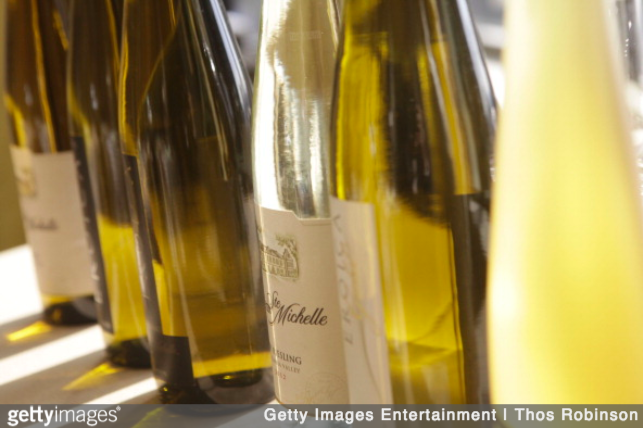Wine is considered by many to be at the forefront of culture. Countries have built their culinary reputations with wine as a dominant form of gastronomic expression. Champagne, Pinot Noir, Merlot and Cabernet Sauvignon are synonymous with excellence and are often viewed as the best wine in the world. They also happen to come primarily from Italy, France and Napa Valley, the three areas of the world where most “experts” will claim the best wine is made. But let’s talk about the most underrated wine in the world, which hails from a country few would expect; Germany’s Riesling grape.
Riesling Wine: A Guide To The Most Underrated Grape
History
Riesling wine comes from the grape known as Vitis Vinifera and originated along the Rhine in Germany. As far as historians can tell, it has been grown since the early 15th century. It thrives in cold climates which has made it a popular choice in vineyards in Canada, New Zealand, and Austria. Riesling is the most grown variety of grape in Germany, making up 23% of all grapes. It is also 22% of all grapes grown in the French region of Alsace. Alsace was briefly a part of the Prussian Empire in the 19th century. As is common with most white wines, Riesling should be slightly chilled in a fridge before serving.
Production Process
One reason that Riesling is perhaps not the most popular kind of wine is that it is rather difficult to manufacture. Because it is a very specific type of grape, the bruising or breaking of the skin while collecting can lead to the production of tannin, causing the Riesling to become too dry. Tannin is commonly used in red wines to make a bitter and dry taste. This means that Riesling must be hand-picked from the vine, instead of by the use of a machine, which can mean the highest-end Rieslings are somewhat expensive.
Malic acid is introduced during the fermentation process, which is what fundamentally separates Riesling from Chardonnay wine and gives it an acidic flavor. During the storing process, Riesling is kept in what is known as “cold stabilization” which means that the wine is kept just above freezing temperature and stops crystallization of acids that result in tiny “diamonds” at the bottom of the bottle.
Taste and Aroma
Riesling wine comes with different levels of sweetness: dry, semi-sweet, sweet and sparkling. Riesling has a very distinct aroma that is based on fruit, such as peaches and oranges, and perfume. Aged Riesling has one of the most intriguing and unique scents of any wine in the world; petrol. Because of this smell, inexperienced drinkers often think the wine has been oxygenized and is, therefore, no longer drinkable. Rieslings are generally very acidic and its taste is consistent with its fruity aroma. In high-end grapes, there is a distinct lemon taste while more common Riesling grapes consist of jasmine, apricots and nectarines.
Food Pairings
Because of its acidity, Riesling is the perfect wine for spice. This may seem odd as Germany and France are not renowned for their spicy cuisine. Consider a meal with Riesling an example of intertwining cultures. Indian and East Asian food is a terrific pairing with any Riesling wine, particularly if you occasionally struggle with heat. The acidity blends perfectly with the rich flavors of Indian or Chinese cuisine. Specific herbs that are recommended to go along with a Riesling wine are Ginger, Cinnamon, Cayenne, Sichuan, Madras Curry and Tumeric. Because you should be looking to pair this wine with spice, the most common proteins used alongside Riesling are duck, pork and chicken.
Noble Rot and Eiswein
Noble rot is one of the most intriguing aspects of Riesling wine and the superb dessert wines that can be harvested from Riesling grapes. This process happens when the grape is left on the vine long past maturity. A fungus known as Botrytis Cinerea develops in the grape. This fungus removes the water, giving the wine a very high sugar concentration. Noble rot is a common process in warm countries such as South Africa.
However, there are other ways to create dessert wine from Riesling grapes. Eiswein is made through a technique popular in colder climates such as Canada. Farmers pick the grapes off of their vines when the temperature is below freezing, usually around -6 degrees Celsius. When this is done the water is turned into ice and therefore can be separated from the grape.
Notable Wineries
If you are looking for terrific Rieslings from its country of origin, Germany, then look no further than Kloster Eberbach and its Steinberg Riesling. The vineyard is at a monastery that was founded all the way back in 1136. Steinberg Rieslings are known for being very dry with flavour profiles that exude acidic fruit such as green apples. These Rieslings are extremely underrated and their price-point reflects that as they can be found anywhere in between 20-35$ Canadian.
Another great winery for Riesling can be found in the Niagara region of Canada, the Tawse Winery. While they have a number of different wines, from sparkling to rosé, their Carly’s Block Riesling is a vintage any wine drinker should try and get their hands on. This Riesling is on the sweeter side, with pear being one of the standout flavours of the wine. It is a little more expensive than the Kloster Eberbach, with a single bottle costing a little over 40$ Canadian, but it is well worth it.

